Jinyuan Zhao
Advancing Re-Ranking with Multimodal Fusion and Target-Oriented Auxiliary Tasks in E-Commerce Search
Aug 11, 2024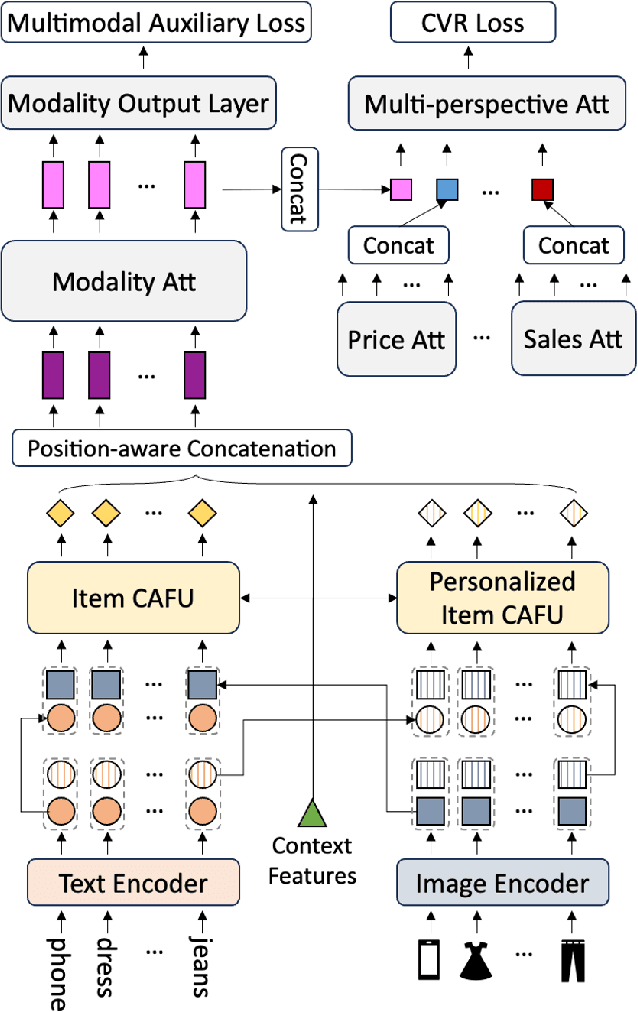
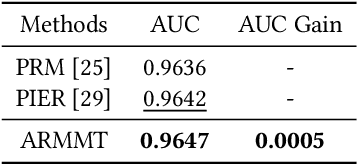

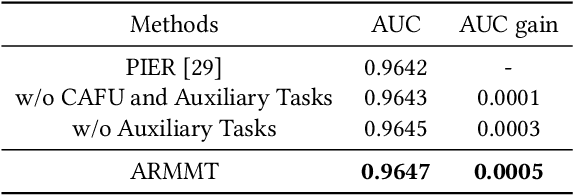
Abstract:In the rapidly evolving field of e-commerce, the effectiveness of search re-ranking models is crucial for enhancing user experience and driving conversion rates. Despite significant advancements in feature representation and model architecture, the integration of multimodal information remains underexplored. This study addresses this gap by investigating the computation and fusion of textual and visual information in the context of re-ranking. We propose \textbf{A}dvancing \textbf{R}e-Ranking with \textbf{M}ulti\textbf{m}odal Fusion and \textbf{T}arget-Oriented Auxiliary Tasks (ARMMT), which integrates an attention-based multimodal fusion technique and an auxiliary ranking-aligned task to enhance item representation and improve targeting capabilities. This method not only enriches the understanding of product attributes but also enables more precise and personalized recommendations. Experimental evaluations on JD.com's search platform demonstrate that ARMMT achieves state-of-the-art performance in multimodal information integration, evidenced by a 0.22\% increase in the Conversion Rate (CVR), significantly contributing to Gross Merchandise Volume (GMV). This pioneering approach has the potential to revolutionize e-commerce re-ranking, leading to elevated user satisfaction and business growth.
MODRL-TA:A Multi-Objective Deep Reinforcement Learning Framework for Traffic Allocation in E-Commerce Search
Jul 22, 2024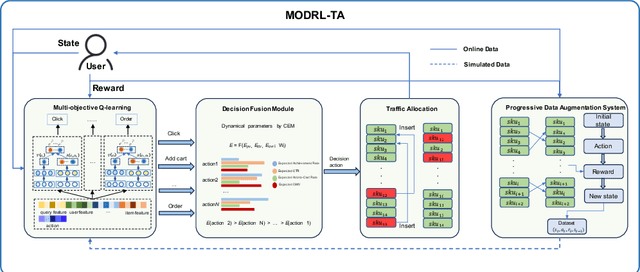

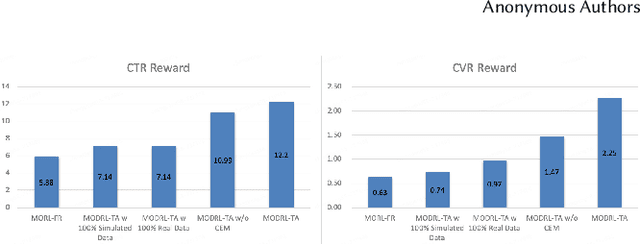

Abstract:Traffic allocation is a process of redistributing natural traffic to products by adjusting their positions in the post-search phase, aimed at effectively fostering merchant growth, precisely meeting customer demands, and ensuring the maximization of interests across various parties within e-commerce platforms. Existing methods based on learning to rank neglect the long-term value of traffic allocation, whereas approaches of reinforcement learning suffer from balancing multiple objectives and the difficulties of cold starts within realworld data environments. To address the aforementioned issues, this paper propose a multi-objective deep reinforcement learning framework consisting of multi-objective Q-learning (MOQ), a decision fusion algorithm (DFM) based on the cross-entropy method(CEM), and a progressive data augmentation system(PDA). Specifically. MOQ constructs ensemble RL models, each dedicated to an objective, such as click-through rate, conversion rate, etc. These models individually determine the position of items as actions, aiming to estimate the long-term value of multiple objectives from an individual perspective. Then we employ DFM to dynamically adjust weights among objectives to maximize long-term value, addressing temporal dynamics in objective preferences in e-commerce scenarios. Initially, PDA trained MOQ with simulated data from offline logs. As experiments progressed, it strategically integrated real user interaction data, ultimately replacing the simulated dataset to alleviate distributional shifts and the cold start problem. Experimental results on real-world online e-commerce systems demonstrate the significant improvements of MODRL-TA, and we have successfully deployed MODRL-TA on an e-commerce search platform.
DGST : Discriminator Guided Scene Text detector
Feb 28, 2020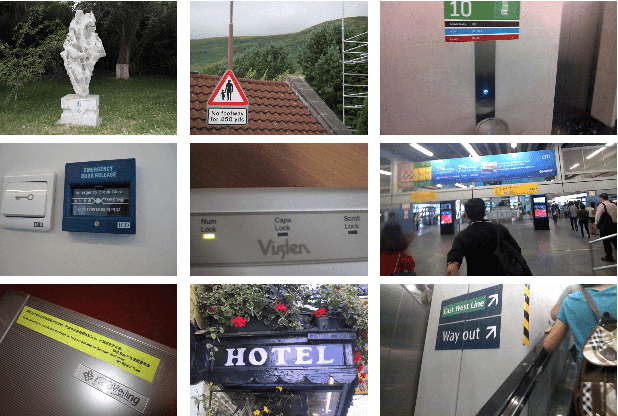

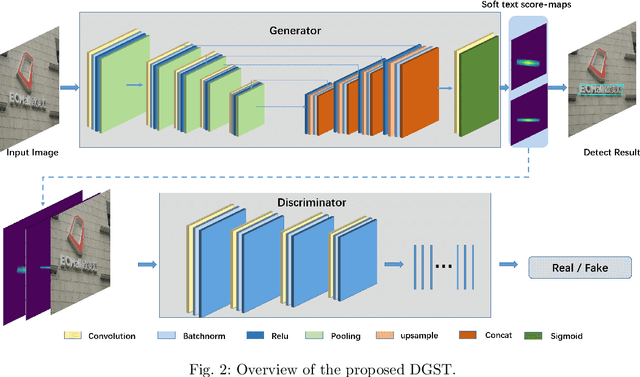
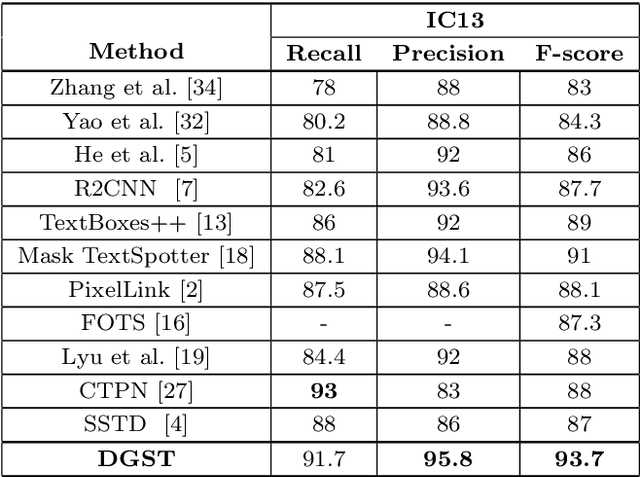
Abstract:Scene text detection task has attracted considerable attention in computer vision because of its wide application. In recent years, many researchers have introduced methods of semantic segmentation into the task of scene text detection, and achieved promising results. This paper proposes a detector framework based on the conditional generative adversarial networks to improve the segmentation effect of scene text detection, called DGST (Discriminator Guided Scene Text detector). Instead of binary text score maps generated by some existing semantic segmentation based methods, we generate a multi-scale soft text score map with more information to represent the text position more reasonably, and solve the problem of text pixel adhesion in the process of text extraction. Experiments on standard datasets demonstrate that the proposed DGST brings noticeable gain and outperforms state-of-the-art methods. Specifically, it achieves an F-measure of 87% on ICDAR 2015 dataset.
 Add to Chrome
Add to Chrome Add to Firefox
Add to Firefox Add to Edge
Add to Edge